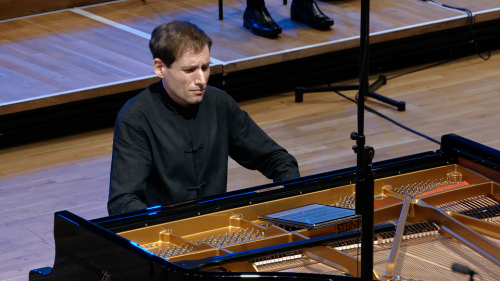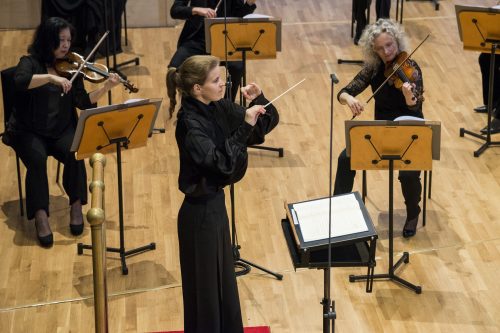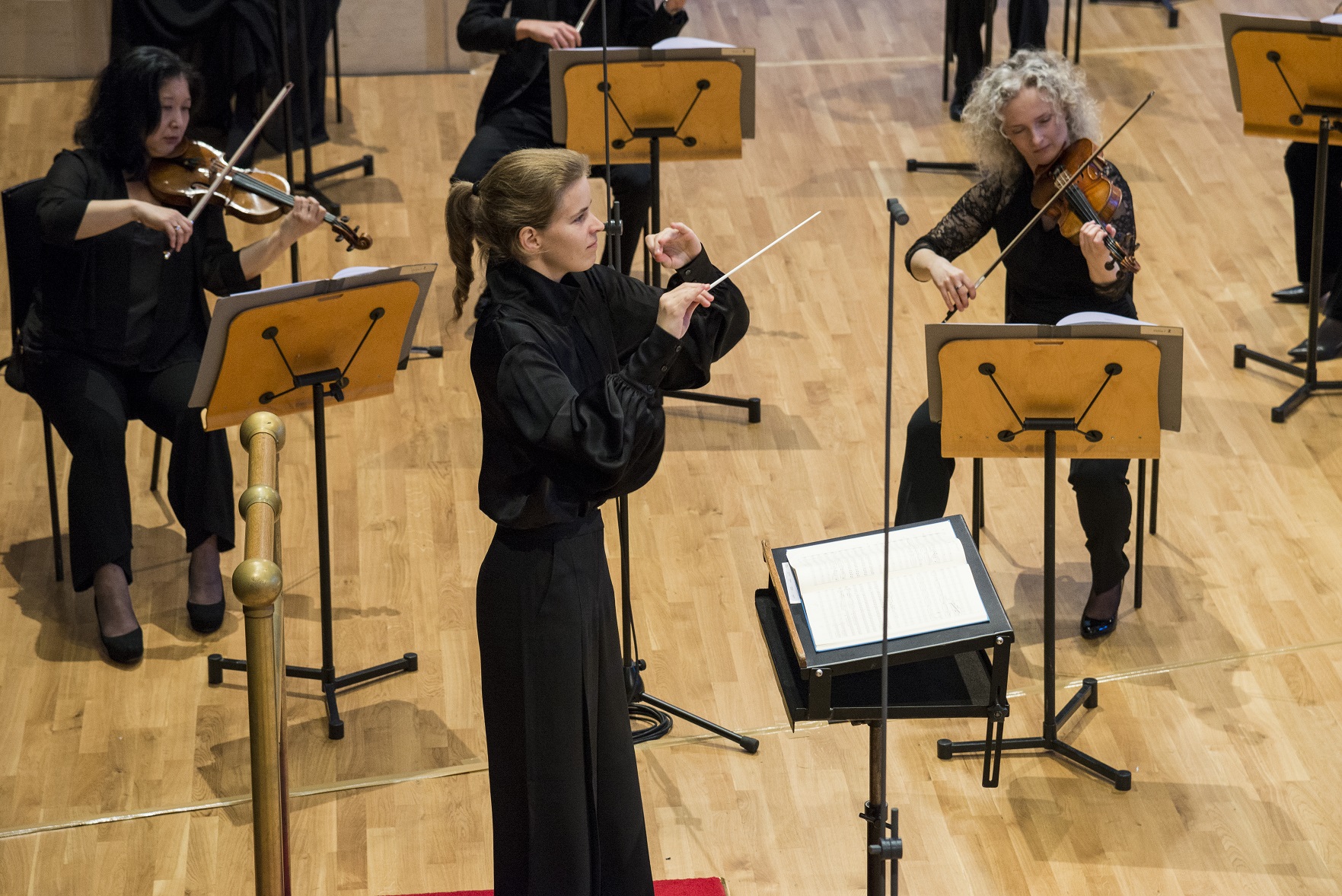 United Kingdom Beethoven, Sibelius: Boris Giltburg (piano), Royal Scottish National Orchestra / Tabita Berglund (conductor). Live-streamed from RSNO Centre Glasgow. 6.11.2020. (GT)
United Kingdom Beethoven, Sibelius: Boris Giltburg (piano), Royal Scottish National Orchestra / Tabita Berglund (conductor). Live-streamed from RSNO Centre Glasgow. 6.11.2020. (GT)

Beethoven – Piano Concerto No.3 in C minor, Op.37; Piano Sonata No.30 in E major, Op.109 (final movement)
Sibelius – Symphony No.7 in C major, Op.105
This, the third in this orchestra’s digital broadcasts from the acoustically perfect RSNO Centre continues the anniversary celebrations of Beethoven, unusually with a concerto and a symphony from Finland. The Russian-born Israeli pianist Boris Giltburg has developed a warm association with the Royal Scottish National Orchestra in recent seasons and established a fine reputation recording two well-received Rachmaninov concertos with them in Glasgow. Giltburg said in his introduction to the broadcast, that the Beethoven C minor Concerto is separate from the previous two, and it is the first to be a dialogue between the soloist and orchestra. He commented that it marked the most important phase in Beethoven’s music, with ‘a sense of withholding adventure, and a feeling of desperation, as if the world is on the edge.’ Giltburg is also in the middle of recording all of the thirty-two Beethoven sonatas.

I have not heard or seen the young Norwegian conductor Tabita Berglund; however, she has already performed with leading orchestras in Europe, and this was her debut in Scotland. Under her baton, the Allegro con brio opened tentatively, embellished by some particularly fine playing from the strings and woodwind sections. This was the first occasion that Berglund has conducted this work, and to a certain extent it showed. Berglund is very good in her gestures, and there are a flair and rhythm to her movement. In this digital setting, one can observe the conductor’s facial expressions, and she often seemed uncertain. For this concert, the violins were on her left, while the lower strings were all on the right. That is different from previous Beethoven concerts here, with the piano was located centrally with the soloist and conductor facing each other, though there was little eye contact between them. For this live stream we had the advantage of a camera allowing close-up of the soloist’s keyboard technique. Giltburg is an exquisite pianist with a hunched over manner yet offering articulation at the keyboard of great detail and ornamentation. However, this was more a performance in which the orchestra followed the soloist. In the Largo, Giltburg played wonderfully well, often he has an almost feminine touch, and a poetic expression of heavenly feeling. Giltburg was well supported especially by Luis Eisen on the bassoon and the flute of Katherine Bryan. The Rondo-Allegro was magnificent with fine contributions from the trumpets and horns, and swiftly Giltburg led this Beethoven masterpiece to a thundering conclusion.
Giltburg introduced the final movement from Beethoven Sonata No.30 in E major playing it like an encore, and this was remarkably controlled with beautiful tonal hues. I note that his hero is the great Emil Gilels, and it shows in his understanding of Beethoven’s sonatas. He has a distinctive perception of Beethoven and one wants to hear more of this brilliant pianist in his ongoing series of the complete sonatas by the composer.
The conductor should have been more on home territory in Sibelius’s valedictory symphony, although I was perplexed by Berglund saying that ‘in this symphony, he was saying what he wanted to say – that was his message’. In my opinion, she was wrong to say the Seventh Symphony was his last word in symphonic music, for we know that he wrote an Eighth Symphony which has been restored, and indeed extracts from which have been performed in recent years.
The Sibelius Seventh is complex to perform with four sections and a 6/4 metre throughout, changing from vivacissimo to moderato, and Berglund held the structure well throughout creating remarkably colourful scenes in the evocation of nature and beauty. There was particularly fine playing from the woodwind, delicious playing from the flute of Katherine Bryan, the clarinet of Timothy Orpen, and the bassoon of Luis Eisen. This was a powerful performance, marvellously reinforced by the magnificent brass section of the orchestra. Of course, this music is in the orchestra’s blood, rarely have they disappointed in producing sustained Nordic drama. One would like to see more of this young Norwegian, she is as diminutive as is the orchestra’s principal guest conductor Elim Chan, and it is welcome to have another bright young woman on the podium.
Gregor Tassie
For more about the RSNO click here.
